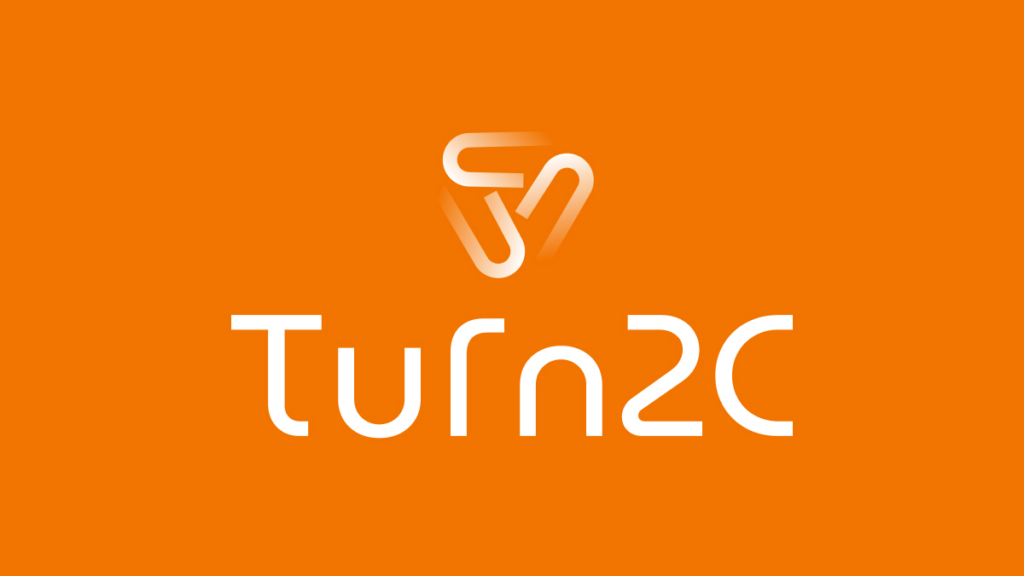Turn2C: Revolutionizing Consortium Operations with AI
In today’s rapidly evolving technological landscape, organizations are increasingly turning to artificial intelligence (AI) to streamline operations, enhance decision-making, and improve overall performance. One such transformative tool is Turn2C. This AI-powered platform is revolutionizing how consortiums — collaborative groups of companies, research entities, and public organizations — operate.
By leveraging AI to analyze over 5,000 groups of data, Turn2C delivers data-driven insights that enhance efficiency, optimize resource allocation, and ultimately boost the effectiveness of consortium collaborations. In this comprehensive guide, we will dive deep into what Turn2C is, how it works, the benefits it provides, and its potential applications across industries. We’ll also take a closer look at how Turn2C is helping organizations overcome traditional operational challenges and maximize their impact.
What Is Turn2C?
Turn2C is a groundbreaking platform that leverages artificial intelligence to analyze vast amounts of data from over 5,000 consortium groups. At its core, Turn2C seeks to optimize and streamline the way these groups collaborate, operate, and make decisions.

Consortiums and Their Challenges
A consortium typically refers to a group of organizations or companies that come together for a common purpose. These partnerships can span a wide range of industries — from research and development in the pharmaceutical industry to global supply chains in manufacturing. While working together offers a host of benefits, it also introduces significant challenges. Coordinating diverse organizations with different goals, resources, and approaches can create inefficiencies, misalignments, and operational bottlenecks. These challenges include:
- Communication issues: Different stakeholders may struggle to communicate effectively, especially when there are multiple groups involved.
- Resource allocation: Coordinating resources, such as human capital, finances, and materials, can be complicated.
- Decision-making delays: With numerous parties involved, reaching a consensus on decisions can often be slow and cumbersome.
- Risk management: Identifying and mitigating risks across a multi-party operation can be overwhelming without proper tools.
This is where Turn2C comes into play. Using artificial intelligence, the platform analyzes large-scale datasets from consortiums and delivers tailored, actionable insights. By doing so, it enhances collaboration, improves efficiency, and ultimately leads to better outcomes.
How Does Turn2C Use Artificial Intelligence?
Turn2C’s effectiveness is primarily rooted in its use of advanced AI technologies. The platform uses machine learning algorithms to analyze massive datasets and provide insights into consortium operations. Here’s a closer look at how Turn2C uses AI to optimize these operations:
Also Read: Storefront Net: Everything You Need to Know
1. Data Analysis: Processing Vast Amounts of Information
One of the biggest strengths of Turn2C is its ability to process and analyze massive datasets. With access to data from over 5,000 groups, the platform can uncover valuable insights about consortium performance. This data can come from various sources, such as historical records, performance metrics, operational workflows, and market trends.
By processing this data, Turn2C can identify patterns, correlations, and trends that human analysts may overlook. For example, it might identify an unexpected shift in resource allocation that leads to inefficiencies, or it might uncover a pattern that suggests a new business opportunity.
2. Predictive Analytics: Anticipating Future Trends
AI’s ability to predict future trends based on historical data is a critical advantage in consortium management. Turn2C’s machine learning models are designed to identify patterns in the data that help forecast future outcomes. This predictive capability can be used in a variety of ways:
- Anticipating market shifts: Turn2C can predict changes in market conditions that might affect the consortium’s operations, allowing organizations to adjust strategies accordingly.
- Forecasting resource needs: The platform can predict the future resource demands of a consortium, ensuring that organizations are adequately prepared for upcoming challenges.
- Identifying potential risks: By recognizing emerging risks early, Turn2C allows consortium leaders to take preventive measures before those risks escalate into significant issues.
3. Automated Decision-Making: Streamlining Processes
Turn2C’s AI also assists with automated decision-making. Using the data it analyzes, the platform can recommend optimal actions, such as which consortium member should handle a particular task or how to allocate resources for maximum impact. These recommendations are based on the analysis of thousands of data points, which helps ensure that decisions are grounded in facts rather than assumptions.
Automated decision-making can save a significant amount of time. Instead of waiting for manual approvals or reviews, organizations can act swiftly on data-backed recommendations. This leads to faster implementation of strategies and, ultimately, better outcomes for the consortium.
4. Continuous Optimization: Ongoing Performance Enhancements
AI has the unique ability to continuously improve its performance as it processes more data. As Turn2C receives new data and updates, it adjusts its algorithms to provide increasingly accurate recommendations. This continuous optimization ensures that consortium operations stay efficient and up-to-date, even as external factors evolve.
For example, if the consortium is working on a long-term project, Turn2C’s optimization algorithms will adjust resource allocation in real time to reflect changes in project scope, team performance, or external conditions.
Why Is Turn2C Important for Consortium Operations?
Consortiums are complex entities that require constant coordination between various stakeholders. Turn2C’s use of artificial intelligence helps simplify these complexities, offering tangible benefits to organizations involved in collaborative efforts.
1. Enhanced Collaboration
Turn2C’s ability to analyze data from diverse consortium groups enables better alignment of goals and activities. With real-time insights, members can better understand each other’s strengths, weaknesses, and priorities. This improved visibility leads to more effective collaboration and less chance of misunderstandings or conflicts.
Also Read: VAS Servis: The Value-Added Services Revolution
For example, Turn2C might identify which partners are best suited to handle specific tasks, ensuring that the consortium’s efforts are maximized. By providing a unified platform for data analysis and communication, Turn2C ensures that all consortium members are on the same page.
2. Risk Reduction
Risk management is one of the most challenging aspects of managing a consortium. The larger and more diverse the group, the greater the number of potential risks — from financial instability to operational delays. Turn2C’s predictive analytics allow consortium leaders to identify risks early, giving them the opportunity to mitigate those risks before they become significant threats.
For instance, if Turn2C detects a potential supply chain disruption or market shift, consortium members can adjust their strategies to minimize the impact. This proactive approach helps organizations navigate uncertainty and stay on track.
3. Increased Efficiency
Turn2C is designed to optimize every aspect of consortium management. From resource allocation to decision-making, the platform ensures that operations are as efficient as possible. By automating routine tasks, streamlining communication, and optimizing resource use, Turn2C saves time and reduces the chances of errors.
For example, by analyzing performance metrics and resource requirements, Turn2C can recommend adjustments that lead to faster project timelines and reduced operational costs. This increased efficiency allows consortiums to accomplish more with fewer resources.
4. Data-Driven Decisions
In today’s data-driven world, making decisions based on gut feelings or assumptions is a risky approach. Turn2C takes the guesswork out of decision-making by providing consortium leaders with real-time, data-backed insights. These insights empower leaders to make informed decisions that are grounded in facts.
Whether it’s choosing the best partners, allocating resources, or managing risks, Turn2C’s data-driven approach ensures that decisions are made based on comprehensive and up-to-date information.
5. Improved Resource Allocation
Resource allocation is a critical aspect of consortium management. Turn2C’s AI helps consortium leaders determine the best way to allocate resources, ensuring that both human and material resources are used effectively. The platform can identify areas where resources are being underutilized and recommend adjustments to maximize efficiency.
Also Read: INI Brokerage Firm June Choi: Revolutionizing Real Estate and Investments
For example, Turn2C might recommend shifting resources to a high-priority project that requires more manpower or funding. By using real-time data to inform resource allocation, Turn2C ensures that the consortium operates at peak efficiency.
The Benefits of Using Turn2C for Consortium Management
Turn2C offers a range of benefits that can significantly improve how consortiums operate. Here are some of the key advantages of using Turn2C:
1. Streamlined Communication
Communication is often a pain point in consortium operations, especially when multiple organizations with different priorities are involved. Turn2C helps streamline communication by providing a single platform where consortium members can access real-time data, insights, and recommendations. This centralized platform ensures that everyone is on the same page and has access to the information they need.
2. Cost Savings
By optimizing consortium operations and reducing inefficiencies, Turn2C can help organizations save money. The platform’s ability to improve resource allocation, reduce risks, and automate decision-making leads to cost savings in the long run. Moreover, by improving the speed and accuracy of decision-making, Turn2C helps organizations avoid costly delays and mistakes.
3. Faster Decision-Making
With Turn2C, consortium leaders can make faster, more informed decisions. The AI-powered platform provides real-time insights that eliminate the need for lengthy deliberations or second-guessing. As a result, decisions can be made quickly, allowing the consortium to stay on track and meet its objectives.
4. Scalability
As consortiums grow and evolve, so too must their operations. Turn2C is highly scalable, meaning it can accommodate the needs of both small and large consortiums. Whether the consortium is adding new members or taking on larger projects, Turn2C can adapt to meet its needs.
5. Competitive Advantage
Organizations that use Turn2C have a distinct advantage over those that don’t. By leveraging AI to optimize consortium operations, these organizations can stay ahead of the competition, make faster decisions, and achieve better results. Turn2C’s ability to process vast amounts of data and generate actionable insights ensures that consortiums are always in a position to succeed.
Real-World Applications of Turn2C
Turn2C can be applied across a wide range of industries. Here are some examples of how Turn2C is being used in the real world:
1. Research and Development Consortia
In industries like healthcare, pharmaceuticals, and technology, research and development consortia are crucial for driving innovation. Turn2C helps streamline collaboration between research institutions, universities, and private companies, allowing them to work more effectively toward common goals. By providing actionable insights, Turn2C speeds up the development of new products and technologies.
2. Supply Chain Consortia
Supply chain consortia can benefit greatly from Turn2C’s ability to optimize logistics and resource allocation. By analyzing data from suppliers and distributors, Turn2C helps consortium members identify inefficiencies and optimize their operations. This leads to cost savings, faster delivery times, and smoother overall operations.
3. Environmental and Sustainability Projects
Turn2C can also be used to optimize sustainability projects. By analyzing environmental data and recommending strategies to reduce waste, energy consumption, and carbon footprints, Turn2C helps organizations achieve their environmental goals more efficiently.
Also Read: Discover Books: A Comprehensive Guide to the Popular Bookstore and Its Closure
4. Government and Public Sector Consortia
Government agencies and public sector organizations often work together on large-scale projects. Turn2C can improve the coordination and efficiency of these collaborations, ensuring that resources are allocated properly and projects are completed on time and within budget.
FAQs about Turn2C
What types of organizations can benefit from Turn2C?
A1: Any organization involved in a consortium can benefit from Turn2C, including those in research, supply chain management, technology, public sector projects, and sustainability efforts.
How does Turn2C ensure data privacy?
A2: Turn2C employs industry-standard encryption methods and complies with strict data security regulations to ensure that all data remains private and secure.
Can Turn2C be used by smaller businesses?
A3: Yes! Turn2C is scalable and can be tailored to suit the needs of both large enterprises and smaller businesses.
Is Turn2C easy to use?
A4: Yes, Turn2C is designed to be user-friendly. It offers intuitive dashboards and easy-to-read reports, making it accessible even to users with limited technical knowledge.
What kind of results can I expect from using Turn2C?
A5: By using Turn2C, you can expect more efficient consortium operations, better decision-making, reduced risks, and improved resource allocation.
Conclusion
In today’s fast-paced world, AI is transforming how businesses and organizations operate, and Turn2C is at the forefront of this revolution. By leveraging artificial intelligence to analyze vast amounts of data and optimize consortium operations, Turn2C is providing organizations with the tools they need to collaborate more effectively, reduce risks, and make better decisions. Whether you’re part of a large research consortium or a smaller business looking to improve your partnerships, Turn2C is a powerful tool that can help you achieve your goals with greater efficiency and success.
By using Turn2C, organizations are no longer relying on guesswork and assumptions. Instead, they’re making data-driven decisions that enhance collaboration, streamline operations, and ultimately lead to better results. With its user-friendly interface and AI-powered capabilities, Turn2C is setting a new standard for consortium management, ensuring that every member can work together seamlessly toward a common objective.






